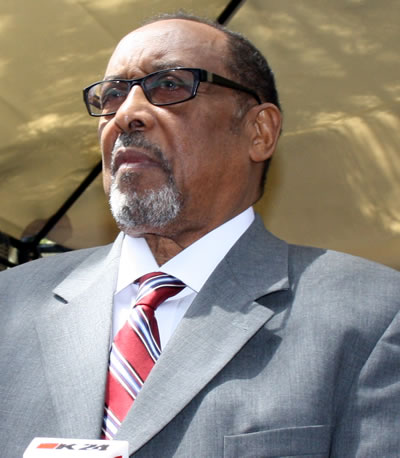by Ali H. Abdulla
Thursday, July 29, 2010
Miyaa lays dirqiyayaa ileen dookhu waa qarane: Saada Cali Warsame
 The new president of the secessionist enclave in the North Western part of Somalia has finally taken office after waiting impatiently one month for his predecessor to vacate the seat of power in Hargeisa. This waiting period saw the emptying of the government coffers and the pilfering of many assets such as land and vehicles that were diverted to personal use by members of the departing administration.
The new president of the secessionist enclave in the North Western part of Somalia has finally taken office after waiting impatiently one month for his predecessor to vacate the seat of power in Hargeisa. This waiting period saw the emptying of the government coffers and the pilfering of many assets such as land and vehicles that were diverted to personal use by members of the departing administration.
Some of the neighboring countries such as Ethiopia, Djibouti and Kenya sent representatives to the inauguration ceremony of the new president. Conspicuously absent were representatives from the Somali people. The Federal government in Mogadishu, the embattled administration in Puntland and the newly formed state of Galmudug were not invited to attend the ceremony thus signaling a bad start for Somali unity and dialogue. Such action is a failure on Silanyo’s part to capitalize on a golden opportunity to bring Somalis together and start the process of healing a very sick nation.
On his first day in power, the new president declared Somaliland as bankrupt, announced the names of his cabinet and extended a half-hearted olive branch to the unionist clans in Sool, Sanaag and Ayn (SSC) regions of Northern Somalia. The three regions are opposed to the outright secession of Somaliland from the rest of the county.
One would normally assess a new administration after a reasonable time frame in power, but I could not resist pointing out a few problems with how things started. We have a saying in Somali, “Wadaanta isha ka qalloocata, faylkay la tagta”. It is difficult to correct what started on a wrong footing.
First of all, the president seems to have ignored the recommendations of the committee that he appointed for advising him on the structure of his cabinet. The committee recommended a lean government composed of 15 highly qualified members. It seems that the clan element took precedence and he ended up with almost doubling the cabinet members by expanding it to26 members.
Although most of the members of the cabinet are highly qualified individuals, at least from the educational and professional side, there are several problems with its composition. The list is not based on merit alone and has a clan oriented distribution. For example, 18 members of the cabinet hail from one clan although Somaliland has 4 major clans. One of the fours clans may not ring a bell for many, but it is the marginalized community of the Gabooye who suffer in silence. Thousands of its members live in squalid conditions in Hargeisa. Practically, they do not count. They received a half Minister while the other two major clans shared 7 Ministers and half-Ministers. This is a 70-30 distribution, a slight improvement from the original 25% allotted to non-SNM clans when Somaliland was first established in the early 1990s by the SNM militias who ,after the central government collapsed, captured all the arsenal of the Somali government in the major cities of the North such as Berbera, Hargeisa and Burao.
Secondly, the president has paid lip-service to the problem in the SSC regions. Apart from inviting the traditional leaders and intellectuals of these regions for talks, he has not expressed his willingness to address the root cause of the problem: the illegal occupation of these areas by the SNM militias. He merely repeated the words of his new foreign Minister who portrayed the problem in SSC as political and economic grievances that could be solved through dialogue. In his opinion, provision of clean water and a few other projects here and there would solve the problem.
Thirdly, the President has used a very disturbing word when he talked about his to-do list. One of the tasks on his agenda is taking care of the Mujahidin, an acronym for the SNM militias that helped destroy the Somali government and plunge the country into a period of anarchy and bloodshed. The word Mujahid in his vocabulary means those who fought and defeated the government forces and their non-SNM allies in the North. This terminology is disturbing and can only serve to alienate many people in the North. Instead of starting with a clean slate, the new President seems intent upon opening wounds that would have been better left to heal with time.
Finally, the new President should realize that the problem in SSC regions is not about political or economic marginalization. It is about Somali Unity versus secession. It is about the blue Somali flag versus the Ethiopian inspired SNM flag. It is about the rejection of historical colonial boundaries versus the glorification of these boundaries.
The sooner that Mr. Silanyo understood the bones of contention, the better it is going to be for all the Somali people who have suffered enough. I certainly hope that he would refrain from repeating the mistakes of his predecessor and start addressing the problem seriously before the situation deteriorates any further.
Ali H. Abdulla
[email protected]